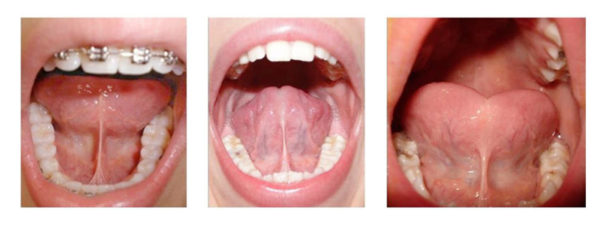
Tongue Tie and Orthodontic Issues: How It Affects Your Bite and Smile
What is a tongue tie? A tongue tie (ankyloglossia) is a condition where the band of tissue (lingual frenulum) under the tongue is too short or tight, restricting tongue movement. While often diagnosed in infants, tongue ties in adults can cause long-term oral and orthodontic issues, affecting speech, breathing, swallowing, and even the alignment of teeth.
At Elate Orthodontics, we often see patients whose tongue ties contribute to bite misalignment, open bites, and other orthodontic concerns. Understanding the link between tongue ties and orthodontics can help you or your child achieve better long-term oral health and a more balanced smile.
How Does a Tongue Tie Impact Orthodontic Health?
Many people associate tongue ties with newborn feeding issues, but the effects extend into childhood and adulthood, influencing speech, jaw development, and orthodontic alignment.
Here’s how a tongue tie can contribute to orthodontic problems:
✔ Affects Natural Tongue Posture – A restricted tongue can’t rest properly against the palate, impacting jaw development and bite alignment.
✔ Leads to an Open Bite – If the tongue sits low in the mouth due to a tongue tie, it may push against the front teeth when swallowing, causing an open bite.
✔ Contributes to Crowding and Misalignment – A tongue that doesn’t function correctly fails to support proper dental arch formation, increasing the risk of crowded or misaligned teeth.
✔ Causes Speech and Swallowing Issues – Tongue ties can alter swallowing patterns, leading to tongue thrusting, which can shift teeth forward over time.
✔ Influences Airway and Breathing – Many patients with untreated posterior tongue ties also experience mouth breathing, which is linked to narrow dental arches and improper jaw growth.
When left uncorrected, these issues may worsen orthodontic concerns, requiring longer treatment with braces or clear aligners.
Signs of a Tongue Tie That May Affect Orthodontic Treatment
Not sure if a tongue tie is affecting your or your child’s teeth? Some common tongue tie symptoms include:
🔹 Difficulty lifting the tongue to the upper teeth or roof of the mouth
🔹 Speech issues (lisp or difficulty pronouncing certain sounds)
🔹 Trouble swallowing or frequent choking while eating
🔹 Mouth breathing or difficulty keeping lips closed
🔹 A narrow dental arch or bite misalignment (open bite, overbite, or crossbite)
🔹 Tongue thrusting when swallowing
🔹 Spacing issues between teeth due to low tongue posture
If any of these sound familiar, a tongue tie assessment can help determine whether a release procedure and orthodontic care are needed.
Tongue Tie Surgery (Frenectomy) and Its Role in Orthodontics
For patients with a significant tongue tie, a tongue tie release (frenectomy) may be recommended before or during orthodontic treatment. This simple procedure involves snipping or laser-releasing the tight tissue to restore proper tongue movement.
How Does a Tongue Tie Release Help with Orthodontic Issues?
✅ Improves Tongue Resting Position – Helps the tongue rest properly on the palate, which encourages natural jaw development.
✅ Reduces the Risk of an Open Bite – With proper tongue posture, there is less force pushing on the front teeth.
✅ Enhances Orthodontic Stability – Ensures that braces or aligners provide long-lasting results.
✅ Encourages Better Swallowing and Speech – Helps eliminate tongue thrusting and improves speech patterns.
At Elate Orthodontics, we work closely with professionals who specialize in tongue tie releases, ensuring a comprehensive approach to orthodontic treatment for the best long-term results.
How to Determine If You Need a Tongue Tie Evaluation
If you or your child are experiencing speech difficulties, bite misalignment, or trouble swallowing, it’s worth getting a tongue tie assessment.
📌 Tongue Tie vs. Normal – What’s the Difference?
Some patients have a mild tongue tie that doesn’t require treatment, while others may have a posterior tongue tie that is less obvious but still affects function. A professional evaluation can determine the best course of action.
Does Every Tongue Tie Need to Be Treated?
Not all tongue ties require treatment. In mild cases, proper myofunctional therapy (tongue exercises) combined with orthodontic care may be enough to retrain the tongue and improve oral function.
However, if a tongue tie is affecting bite alignment, speech, or breathing, a frenectomy + orthodontic treatment is often the best approach for a healthy, well-aligned smile.
Tongue Ties and Orthodontics: Key Takeaways
✔ Tongue ties affect more than just speech and feeding—they can contribute to orthodontic issues, including open bites, misalignment, and mouth breathing.
✔ A tongue tie release (frenectomy) may be beneficial for patients experiencing orthodontic challenges due to restricted tongue movement.
✔ Early intervention can help reduce long-term orthodontic complications, leading to a more stable bite and improved jaw development.
If you’re wondering whether a tongue tie is impacting your orthodontic treatment, Elate Orthodontics is here to help!
📍 Visit us at:
Let’s work together to create a healthy, well-aligned smile that lasts a lifetime! 💙✨
